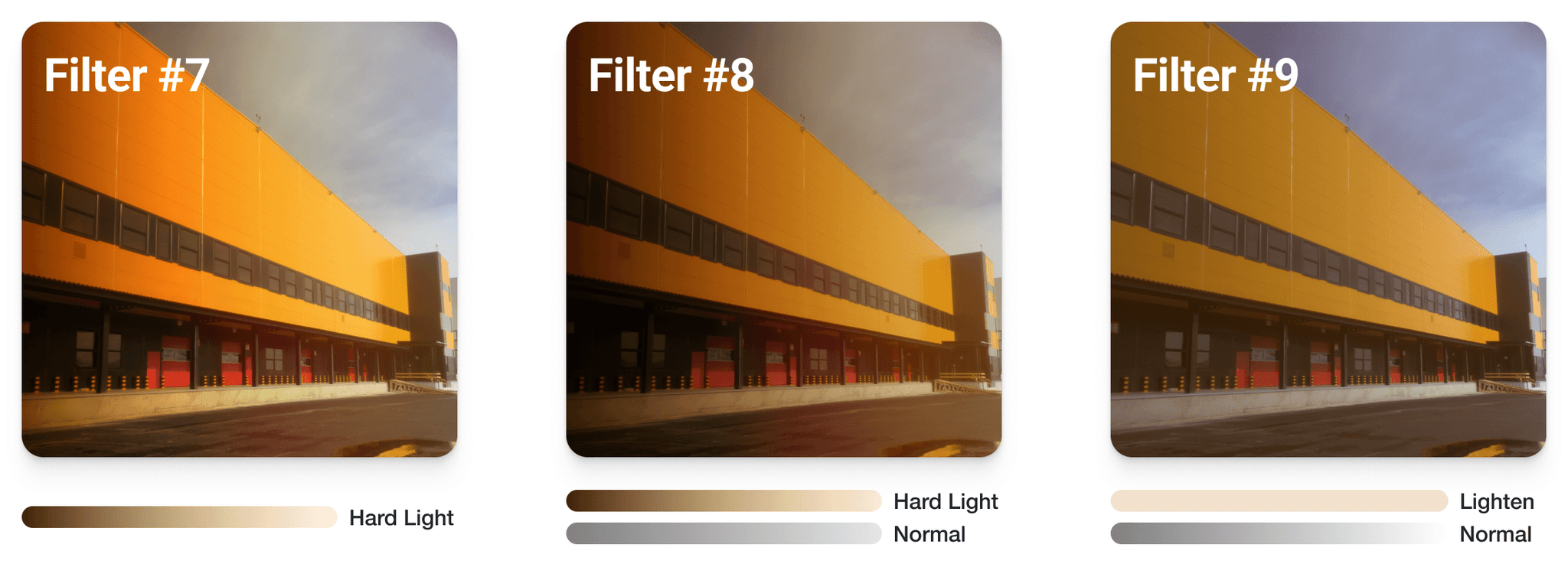Magic filters
Map styles exploration for product and marketing use
Photos were an essential part of the product. They were the focal points of the app and heavily influenced users' perceptions of it.
Brutal reality
One of the main features of the system was that all photos were taken by building scouts (i.e., guaranteed real estate description accuracy). As great scouts were in understanding the commercial real estate business, as terrible they were in taking photos. It didn't help that all the photos were taken on phones and sometimes without leaving a car.
The most visually attractive part of the system sometimes looked terrible. It was clear that I needed to fix the problem.

The first idea was to use some autocorrection photo tool.

But even if there were such a tool with an API interface (which I couldn't find), the resulting photos would still be unattractive.
I needed something more substantial and expressive that could hide a part of a photo.
Photo filters
My idea was to have two versions of photos in the service:
Original version for buildings' profiles (to clearly show the state of a building)
Modified thumbnails for the main screen (to not scare people from the first screen)
The modification was achieved by adding a semi-transparent layer(s) on top of a photo.

The dark filter was optional but required to ensure sufficient contrast between the background and text.
Making filters
I experimented with different photos, colors, gradients, transparencies, and blending modes. The main problem was that the same filters worked well on one photo and poorly on others, so we couldn't have a universal filter.






During experiments, I discovered that I needed two types of filters: blue and yellow. Almost every photo was shifted to cold or warm (depending on the weather and a building's color). Meanwhile, blue filters worked well on bluish photos and badly on yellowish photos (and vice versa).
I also understood that even if part of an image is barely visible, it'll still be enough to recognize it. I used this technique for the full-card images as they required darkening to place white text on top.
Meanwhile, cards without text over a photo didn't require such drastic modifications. In other words, I needed different filters for different types of cards.
Results
Working with filters was challenging because of time-consuming manual experiments.
Considering the absence of LLMs at that time, the results were good: filters did their job. If I work on new filters using modern technologies today, I could make them more exciting and impressive.






